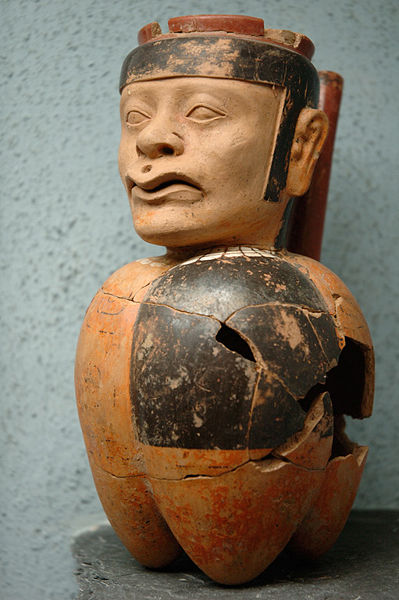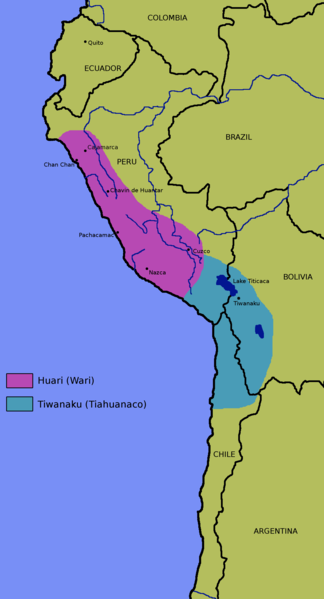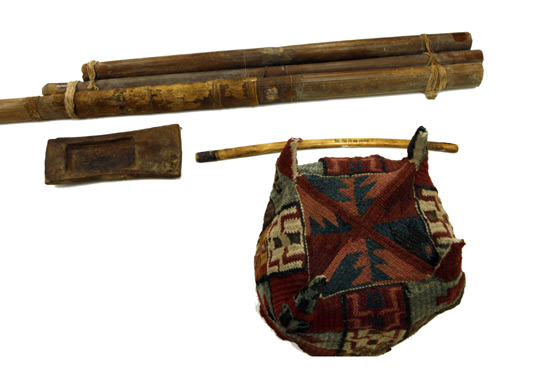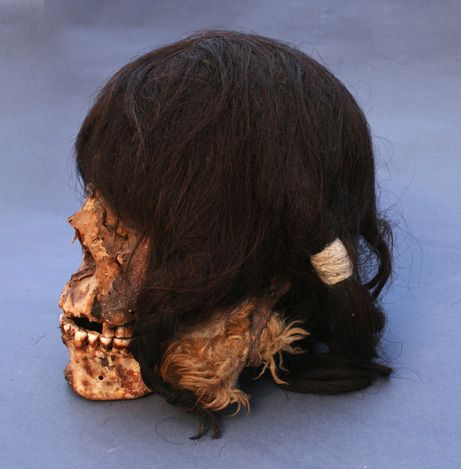Proof that Ancient South Americans Took Hallucinogens Discovered in Mummies’ Hair
posted on November 8th, 2008 in Andes Mountains, Archaeology, Bolivia, Recent Discoveries, Tiwanaku Culture
Andean Mummy Hairs Show Hallucinogen Use
Discovery News
Oct. 29, 2008 — Andean mummy hair has provided the first direct archaeological evidence of the consumption of hallucinogens in pre-Hispanic Andean populations, according to recent gas chromatography and mass spectrometry analysis…
Indirect evidence for psychoactive drug use in South America’s ancient populations abound, ranging from the discovery of drug equipment to the identification of hallucinogenic herb residuals in snuffing kits.
However, there wasn’t direct evidence that the ancient Andean people actually consumed mind-altering drugs.
To find a direct link, chemical archaeologist Juan Pablo Ogalde and colleagues at the University of Tarapacá in Arica, Chile, analyzed 32 mummies from the Azapa Valley in northern Chile.
Naturally mummified in the Acatama desert, the bodies belonged to the Tiwanaku, the ancestors of the Incas.
The little known Tiwanaku established a civilization around 1200 B.C. that prevailed for almost three millennia, becoming one of history’s longest-running empires.
The Tiwanaku civilization predated the Inca Empire by 300 years
At the peak of their power, between 700 and 1000 A.D., they dominated the Andes, controlling large areas of Bolivia and Peru and parts of Argentina and Chile.
Their burials often contain elaborately decorated snuffing trays and panpipes.
“At least in view of the grave goods, the Tiwanaku people were using hallucinogenic drugs,” Ogalde and colleagues wrote in the October issue of the Journal of Archaeological Science.
Indeed, a previous chemical analysis of some snuffing tablets’ powder found in the Acatama desert showed the presence of Vilca tree (Anadenanthera colu
“Surprisingly, none of the 32 mummies tested positive for hallucinogens consumption related to this plant,” Ogalde told Discovery News.
But analysis of the chemical composition of hairs from an adult male and a one-year-old baby, both dating between 800 and 1200 A.D., revealed the presence of the hallucinogenic alkaloid harmine.
While it is unlikely that the infant, buried with a snuffing tablet and a four points Tiwanaku hat, was a drug addict (the hallucinogen might have been passed through breastfeeding), the Tiwanaku man was most probably a regular sniffer.
The adult male appeared to have suffered sniffing lesions near the nose and was buried with an elaborate snuffing kit.
“Our identification of harmine in the hair of these two Azapa Valley mummies is a very important finding. The only plant in South America that contain harmine is the jungle vine , also known as ayahuasca. But this plant does not grow in the Azapa valley,” Ogalde said.
The presence of harmine suggests the Tiwanaku travelled in search of exotic hallucinogens, and brought the Banisteriopsis vine from as far as the Amazon rainforest, some 300 miles away.
“We think that Banisteriopsiswas not necessarily used as a hallucinogenic mixture, and perhaps was used in therapeutic practices. It is also possible that its consumption with snuffing kits was used as element of social differentiation,” Ogalde said.
Another study, also published this month in the Journal of Archaeological Science, confirmed South America’s leading role in the history of mind-altering drugs.
Analysis on ceramic snuffing tubes and inhaling bowls found on the Caribbean island of Carriacou in the West Indies, showed that the drug kits were not made using local materials.
According to Fitzpatrick, the bowls not only shed new light on how long humans have been taking drugs, but are “the first physical evidence” to show that the people who colonized the Caribbean from South America brought their heirloom drug paraphernalia with them.




